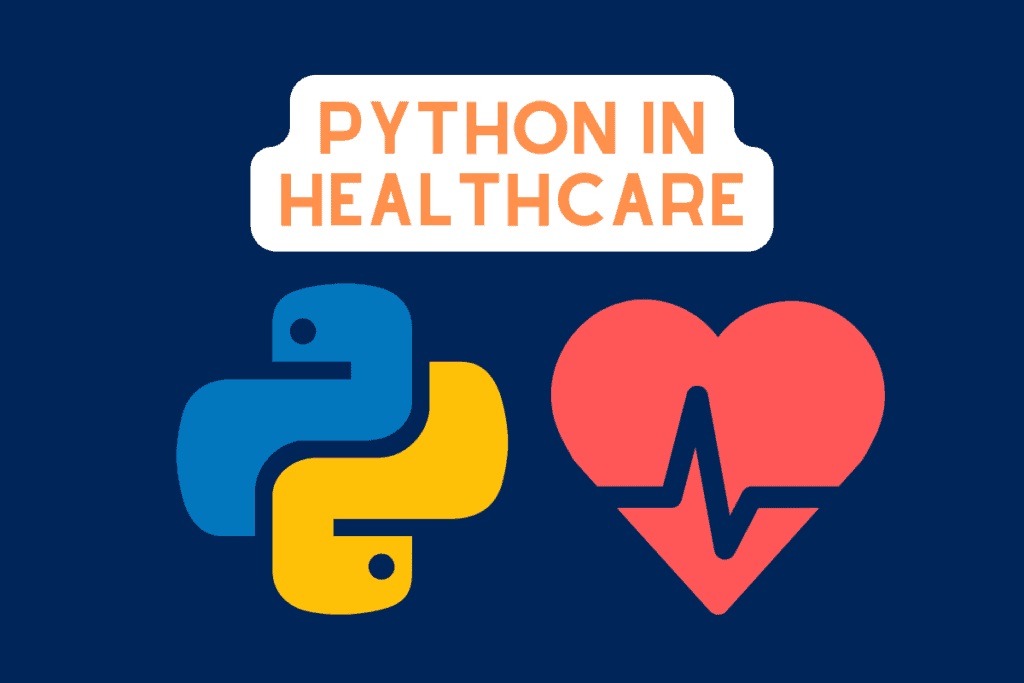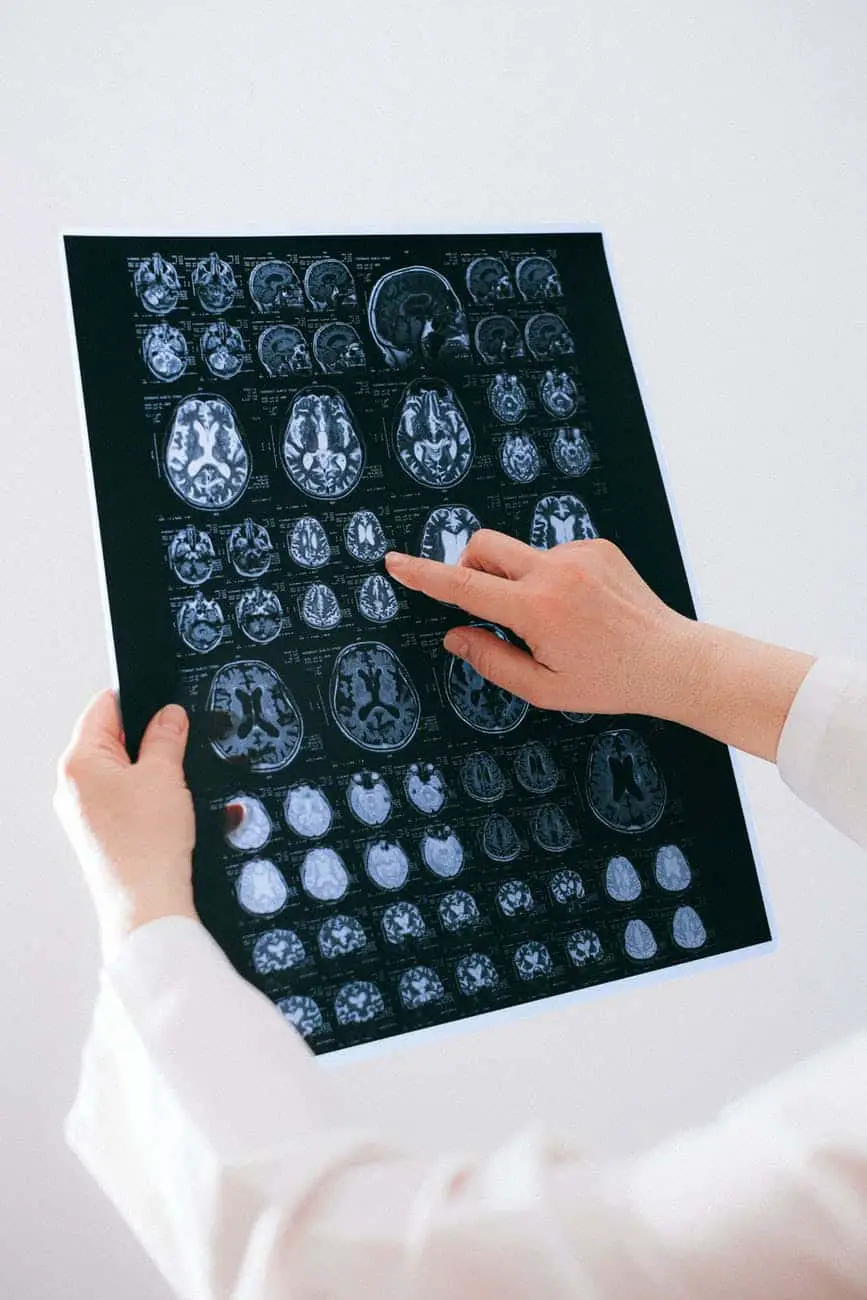This post may contain paid links to my personal recommendations that help to support the site!
Python is a widely-used programming language and is beginning to have more applications in the healthcare industry.
I’ll be sharing with you why Python is great for healthcare and some common applications that I could find.
Here’s a short answer:

If there’s one great thing that I love about the Python programming language, it’s because of the large number of resources for machine learning libraries.
That’s where most of the applications in healthcare for Python will belong. Through the use of these machine learning libraries in Python, healthcare has seen great innovations and applications.
So here are some of them!
Applications of Python in Healthcare
- Medical Image Diagnostics
- Hospital Operations Management
- Genomic Studies
- Medicine Discoveries
- Predictive Prognosis
Applications of Python in Healthcare
1. Medical Image Diagnostics

In medical diagnostics, decisions made by doctors are largely based on the results of medical images. These might include Computed Tomography (CT) scans, Magnetic Resonance Imaging (MRI) scans.
Of course, these would traditionally be done by doctors manually, when they scan the many images with their own eyes.
Here’s where the applications of Python in machine learning really shine.
When Python is utilized as a programming tool for handling data, sets of instructions can be sent to an (artificial intelligence) AI model which uses machine learning to automatically scan these images.
Such images are processed and reports of possible diagnoses are produced for the doctors. These computer-aided diagnoses are all powered by AI through the use of Python.
In a study done on breast cancer diagnosis by Harvard Medical School, the AI model was able to correctly predict with 92% accuracy. The computer was trained to distinguish tumors from normal areas.
With such high accuracy, doctors are able to have a reference to guide them in making their diagnosis.
2. Hospital Operations Management

In a hospital, efficiency is essential, as patients’ lives are in the healthcare workers’ hands. However, most healthcare organizations such as hospitals do not actually have such digital infrastructure up until recent years.
Hospital operations run around the clock and usually involve the managing of doctors, nurses, and other additional staff and their respective assignments to patients.
This process of management can be quite hectic, but with the use of Python, things have been shifting in the right direction over the past few years.
Python is starting to be used in hospitals for business intelligence through the works of data scientists.
Data science using Python enables the operations of the hospitals to be visualized in an easy-to-digest way to help management teams better optimize healthcare worker allocations.
Curious to learn more about how other technologies like Tableau have improved healthcare?
Check out my other article here!
3. Genomic Studies
Genomic studies involve the analysis of our genes to uncover possible associations to disease. Genomics and healthcare usually come hand in hand and I would say that they are even inter-linked.
Through the data analysis of gene data from healthcare samples using Python, more biological insight can be discovered about a patient’s condition.
Here’s where the SciPy library comes in handy! This powerful, free tool within the Python environment can be used for handling data to produce insights with scientific impact.
Specifically in the study of genes, SciPy is useful in the processing of files generated from analyzing genes.
4. Medicine Discoveries

Python’s use can even be extended beyond direct interactions with patients. The impact on healthcare can even be felt even from the laboratories.
The process of producing medicine can be a rather long one, considering the need to produce one that’s both safe and effective.
Traditionally, these medicines are derived using a manual matching process where likely chemicals are being tested against for a specific disease.
However, with the use of Python, bioinformaticians and healthcare research scientists are starting to use computational approaches to replace such manual work.
This can potentially reduce time in determining a successful match that can lead to actual medicines!
Curious to know more about bioinformatics?
Read more on my article here!
5. Predictive Prognosis
A common problem that doctors tend to have is providing a proper prognosis for a patient’s disease. A prognosis is an estimation of the progress of a certain disease in a patient.
Some might say that this is guesswork by a doctor with limited information and resources, which can be improved.
This is where Python can come in handy and help again, through the use of machine learning. More specifically, deep neural network algorithms are used in predicting the mortality of patients.
In most cases of prognosis, doctors rely on a certain biomarker level to make some guess about the prognosis.
With the use of the predictive analytics Python can provide, the prognosis of a patient can be estimated easily.
Of course, this is used in combination with a doctor’s knowledge and expertise. When a doctor leverages such technology, more accurate prognoses can be made, improving the overall patient experience.
Some of these can be done using R programming too, check out my article on R programming being used in healthcare over here.
Why is Python used for Healthcare?
Now that we’ve discovered how Python is applied through the various applications, you must be wondering – why is Python chosen over any other programming languages out there?
Well, in this next section, I have compiled a list of reasons why Python is a great choice when applied to the healthcare setting.
1. Security

Wouldn’t you want your own private healthcare data to be safe and secure? Security is something that Python offers, through the constant updates that deal with security issues.
Security is something that’s seen at the utmost priority when healthcare organizations involve digital solutions, due to their strict health regulations.
In the US, the Health Insurance Portability and Accountability Act (HIPAA) is a regulation that involves the use of any medical software services dealing with personal health data.
Python’s vast number of libraries allow the implementation of the required safety standards of such regulation. This makes Python a very strong option when picking a language to start within healthcare.
Python is a popular language used by many in the data science community.
Therefore, it has many professionals within its large community working and contributing against any threats of hacking.
2. Automation
In every business, there are bound to be repetitive tasks that can be potentially time-consuming for healthcare professionals who could be spending more time at the bedside.
The power of automation can be easily unlocked through Python. Python can be written to design programs that can lift the burdens of healthcare workers.
Repetitive tasks are taken over by automation through the Python code, increasing efficiencies in an already busy environment.
3. Open-source
That basically means that the tools and software are all freely available for anyone to use! The only caveat is that you’d have to build up projects yourself.
However, this is still a great option for healthcare organizations due to the cost-efficiency of having open-source software such as Python.
This is especially useful in hospitals, which tend to be financially tight and conservative with resources.
In such cases, Python is usually the preferred tool!
Check out my article on why Python is used more than R in data science here.
Related Questions
What Other Programming Languages Can be Used in Healthcare?
Another great option for use in healthcare organizations is the R programming language.
Developed initially by statisticians and commonly used in biological data analysis, it is a natural alternative to Python.
R also provides similar functionalities to Python in terms of machine learning and data handling.
Can Python be Used in Healthcare without Machine Learning?
Yes!
In fact, there are Python-based frameworks like Django and Flask that can be used to build prototypes of web apps.
These web apps can be used as platforms for managing digital health data or new health services products such as chatbots or telemedicine.
Final Thoughts
It’s quite amazing how powerfully healthcare is being changed through the use of Python, isn’t it? I’ve been following this field of healthcare analytics and this expansion has only just begun!
Python is definitely a promising language that shouldn’t be overlooked when considering setting up analytics in a healthcare organization. I’m excited for what’s to come in this new field, are you?
My Favorite Learning Resources:
My Recommended Learning Platforms!
| Learning Platform | What’s Good About the Platform? | |
|---|---|---|
| 1 | Coursera | Certificates are offered by popular learning institutes and companies like Google & IBM |
| 2 | DataCamp | Comes with an integrated coding platform, great for beginners! |
| 3 | Pluralsight | Strong focus on data skills, taught by industry experts |
| 4 | Stratascratch | Learn faster by doing real interview coding practices for data science |
| 5 | Udacity | High-quality, comprehensive courses |
My Recommended Online Courses + Books!
| Topic | Online Courses | Books | |
|---|---|---|---|
| 1 | Data Analytics | Google Data Analytics Professional Certificate | – |
| 2 | Data Science | IBM Data Science Professional Certificate | – |
| 3 | Excel | Excel Skills for Business Specialization | – |
| 4 | Python | Python for Everybody Specialization | Python for Data Analysis |
| 5 | SQL | Introduction to SQL | SQL: The Ultimate Beginners Guide: Learn SQL Today |
| 6 | Tableau | Data Visualization with Tableau | Practical Tableau |
| 7 | Power BI | Getting Started with Power BI Desktop | Beginning Microsoft Power BI |
| 8 | R Programming | Data Science: Foundations using R Specialization | Learning R |
| 9 | Data Visualization | – | Big Book of Dashboards |

